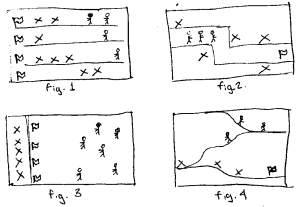Nacido en Ciudad Juárez en 1981. Estudio Ingenieria en Sistemas en el Instituto Tecnológico de Ciudad Juárez, para posteriormente estudiar Licenciatura en Animación y Arte Digital en el Instituto Tecnológico de Estudios Superiores de Monterrey campus Ciudad Juárez.
Lo anterior es relevante si observamos que desde siempre tenia un objetivo muy claro.
Estando ya en el ITESM, formo un pequeño grupo de amigos interesados en explorar en la creación y desarrollo de proyectos interactivos y de esa manera nació lo que hoy denominanControl Freak Studio, haciendo un referente a la interactividad pero de una forma no comúnmente vista.

La empresa, que aún esta en el proceso de registro, trata más que nada sobre eso, el desarrollo y creación de experiencias interactivas. Y está conformada por Alan Román, Mariana Laguera, Vania Rosas y Angel Solares.
Han creado, desarrollado y/o participado en algunos eventos tanto para eventos especiales como para el público en general, algunos en centros comerciales y están trabajando en distintos proyectos entre ellos con propuestas para trabajar con museos de la ciudad viendo la posibilidad de agregar interactividad.
Paralelamente han trabajado en el desarrollo de aplicaciones y juegos de video para móviles, lanzando su primer título el pasado 21 de abril en la tienda de Google Play, de titulo Star Basket.
Google Play es la tienda virtual de contenidos y aplicaciones orientada a la plataforma Android de tabletas y teléfonos inteligentes, por lo que representa un escaparate de alcance global para la distribución de este tipo de contenidos, es decir, cualquier persona en cualquier parte del mundo con un Smart Phone con sistema operativo Android puede acceder y descargar su juego.
* Fuente de la nota: Juarez a Diario.
http://www.juarezadiario.com/radio/control-freak-studio-tecnologia-juarez/
